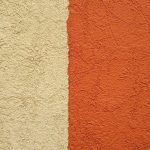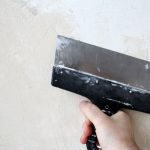When it comes to enhancing the curb appeal and protection of your home, painting your residential roof is a decision that offers a multitude of benefits. Not only does it add a touch of elegance to your home, but it also serves as a safeguard against harsh elements, thereby increasing the overall value of your property.
As professional residential painters in Hobart, we have compiled a handy guide including various aspects of painting your residential roof, along with some expert insights.
Why Paint Your Roof?
Enhancing Aesthetic Appeal
One of the primary reasons to consider painting your residential roof is the remarkable enhancement it brings to your home’s exterior. A fresh coat of paint can transform the look of your entire house, making it appear more modern, vibrant, and visually appealing. With a wide range of colour options, you can choose a shade that perfectly complements your home’s architecture and personal style.
Weather-Proofing Your Roof
Hobart’s ever-changing climate can take a toll on your roof’s longevity. Painting your roof protects against harsh elements, including rain, wind, and UV rays. The paint forms a barrier that prevents moisture infiltration and helps maintain the structural integrity of the roofing materials. As a result, your roof becomes more resistant to cracks, leaks, and other forms of weather-related damage. However, it is important to hire expert residential painters to achieve the desired results.
A Rise in Home Value
Investing in residential painting services, especially for your roof, can significantly increase the value of your home. A well-maintained and aesthetically pleasing exterior is a major selling point for potential buyers. A freshly painted roof indicates diligent upkeep and suggests that the property is less likely to have hidden issues, making it more attractive to prospective purchasers.
Energy Efficiency
Opting for reflective roof coatings can contribute to improved energy efficiency. These coatings reflect sunlight and heat, reducing the amount of heat absorbed by your home. This, in turn, can lead to lower energy bills by decreasing the demand for your cooling systems, particularly during the scorching summers.
Residential Painters’ Tips to Paint Roof
1. Roof Inspection
A comprehensive roof inspection forms the cornerstone of any successful painting project. Thoroughly examine your roof for signs of wear and tear, such as cracked or damaged shingles, rusted metal, or deteriorated tiles. Addressing these issues before painting ensures a smoother surface and prevents underlying problems from exacerbating over time.
2. Sealant Application
After identifying and addressing any issues, it’s time to apply a high-quality roof sealant. This step is vital in creating a seamless and waterproof surface, minimizing the risk of leaks, and enhancing the paint’s adhesion. The sealant also acts as a protective barrier against moisture and UV rays, extending your roof’s life.
3. Right Roof Coating Selection
Choosing the correct roof coating is a pivotal decision that impacts the longevity and performance of your painted roof. Take into account factors such as the material of your roof, local weather conditions, and the desired aesthetic outcome. Reflective coatings are excellent for regions with intense sunlight. Professional residential painters can help make the ideal choice.
4. Cleaning of Roof
Cleaning the roof is a critical step that ensures optimal paint adhesion. Rid the surface of dirt, debris, moss, algae, and any existing paint that may be peeling. Power washing is a common method, but be cautious not to use excessive pressure, which could damage delicate roofing materials. A thoroughly clean surface is essential for a flawless finish.
5. Preparing the Roof
Proper preparation sets the stage for a successful painting process. Safeguard nearby fixtures, windows, and landscaping by covering them with drop cloths. Clear out the gutters to ensure unobstructed water flow, preventing potential paint buildup or drainage issues during and after painting.
6. Choosing the Right Method
The method of application significantly affects the outcome of your roof painting project. Brushes and rollers provide precise control and are best for detailed areas, while sprayers are efficient for covering large expanses. Consult experienced residential painters in Hobart to determine the most suitable method for your roof’s size, shape, and condition.
7. Choosing Roof Paint
Selecting the appropriate roof paint involves considering various factors beyond colour. Opt for a paint specifically designed for your roof material, ensuring compatibility and durability. Reflective coatings add a touch of vibrancy to your home and contribute to energy efficiency by reflecting sunlight and reducing heat absorption.
8. Starting the Process
The process begins with applying a high-quality primer that enhances paint adhesion and ensures a uniform surface for the topcoat. Once the primer is dry, proceed to apply the chosen roof paint. Work methodically, starting from one end of the roof and progressing systematically to achieve consistent coverage.
9. Applying the Paint
Skillful paint application is key to a professional-looking finish. Whether using a brush, roller, or sprayer, maintain a steady and even hand to prevent drips, streaks, or uneven patches. Applying multiple thin coats is recommended over a single thick coat, as it promotes better adhesion and minimizes the risk of sagging. It is best to hire residential painters to ensure precise and neat application of paint throughout the roof. Here is how you can get started.
10. Finishing Touches
Allow the paint to dry thoroughly according to the manufacturer’s instructions. Conduct a thorough inspection to ensure uniform coverage and address missed spots or imperfections. Touch up as needed, and once you’re satisfied with the result, remove the protective coverings from the surrounding areas, revealing your freshly painted and transformed residential roof.
FAQs on Residential Roof Painting
As you undertake painting your residential roof, it’s essential to be well-informed about potential pitfalls and make educated decisions to ensure a successful outcome. Here, we address common concerns and queries homeowners often have when considering a roof painting project.
1. What Mistakes Should I Avoid While Painting Roof Tiles?
Avoid rushing through the process. Inadequate surface preparation, such as failing to clean or repair damaged tiles, can lead to uneven paint application and premature peeling. Additionally, using low-quality or mismatched paints can result in an unsightly finish that diminishes the overall aesthetic appeal of your home.
2. Can You Paint Around Solar Panels?
Yes, it’s possible to paint around solar panels. However, it requires careful consideration and precision. Consult with professionals specializing in residential painting services in Hobart to ensure that the solar panels are properly protected and masked off during the painting process. This helps maintain the efficiency and integrity of your solar energy system.
3. What is the Cost of Professional Roof Painting?
The cost of professional roof painting differs based on the size of your roof, its condition, the kind of coating used, and labour expenses. It’s advisable to request a detailed quote from reputable residential painters. While cost is a consideration, prioritize quality and expertise to ensure a lasting and visually pleasing result.
4. What is Heat Reflective Paint?
Heat-reflective paint is designed to reduce heat absorption by reflecting a significant portion of sunlight. This type of paint can help regulate indoor temperatures, improving energy efficiency and reducing cooling costs. Applying heat-reflective paint to your roof can be particularly advantageous in Hobart’s climate.
5. Should You Prime the Surface of a Metal Roof?
Priming a metal roof is recommended, as it enhances paint adhesion and provides additional protection against corrosion. A primer creates a solid foundation for the paint to bond with, increasing the longevity of your roof’s finish. Consult experts to select an appropriate primer for your specific metal roofing material.
6. How to Waterproof Your Roofing System?
Waterproofing your roof is essential to prevent leaks and moisture damage. Prior to painting, ensure that your roof is properly sealed and waterproofed. This includes addressing any cracks, gaps, or vulnerabilities in the roofing material. A waterproofed roof protects your home’s interior and prolongs the life of your paint job.
7. Will Roof Coating Stop Leaks and Dampness?
Roof coatings can provide an additional layer of protection against leaks and dampness, but they are not a substitute for proper roof repairs. Address any existing leaks or water issues before applying the coating. Coatings can help prevent future leaks by creating a water-resistant barrier, but ensuring a sound roofing structure is essential.
Navigating these considerations and potential challenges with the guidance of experienced residential painters in Hobart will contribute to a successful roof painting project.
Dyson Painters: Expert House Painters in Hobart
Ready to transform your home into a masterpiece of beauty and elegance? Look no further! At Dyson Painters, our team of skilled house painters in Hobart is dedicated to turning your vision into reality. Whether you’re seeking a vibrant refresh or a subtle transformation, our professionals bring unparalleled expertise to every brushstroke.
With a keen eye for detail and a commitment to quality, we deliver more than just a paint job – we deliver a work of art that stands the test of time. Contact us at 0420-213-214 or email us at admin@dysonpainters.com.au to discuss your requirements or to get a free quote for commercial or residential painting services in Hobart. Let your home’s true potential shine with Dyson Painters!





